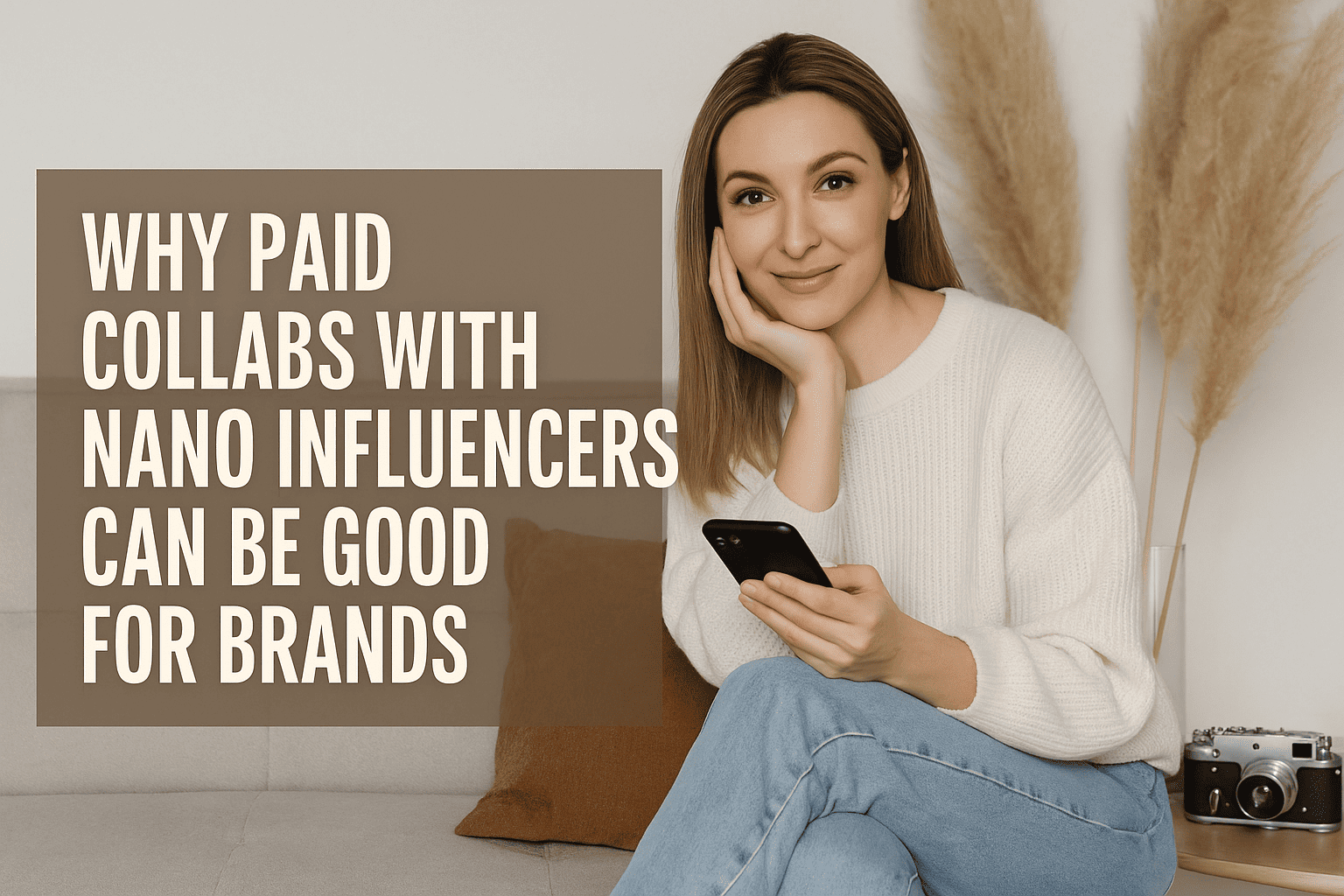In the wild world of influencer marketing, bigger doesn’t always mean better. More and more brands—especially small ones—are tapping into the power of nano influencers, and not just for freebies. They’re paying them. Yep, actual money. And spoiler alert: it’s totally worth it. Let’s break down why.
The Rise of the Nano Influencer Economy
There’s a shift happening. Gone are the days when brands threw their entire budget at one macro influencer with a million followers and prayed for the best. Now, it’s about building real trust—and that’s where nano influencer marketing is crushing it.
Nano influencers (those with 1K to 10K followers) are thriving in the modern influencer economy because their content feels authentic. Their followers are actual people, not bots or passive scrollers. Think: highly engaged audiences, niche communities, and creators who actually reply to DMs.
| Influencer Tier | Followers | Engagement Rate | Trust Factor |
| Nano | 1K–10K | High | 🔥🔥🔥 |
| Micro | 10K–100K | Medium | Solid |
| Macro | 100K+ | Lower | Meh |
And for small brands trying to build buzz without blowing the budget? Nano influencers are a dream.
Why Nano Influencers Are Moving Away from Barter
We get it—barter deals used to be the norm. You send a product; they post about it. No money involved. Simple, right? But here’s the thing: creators have evolved.
Should I pay nano influencers or offer barter deals?
These days, most nano influencers are balancing content creation with school, 9-to-5s, or side gigs. Expecting them to create custom content for free skincare or snacks just isn’t it anymore. Paid collabs = respect + results.
But also, let’s be real: this is turning into a full-on career path for a lot of people. Content creation isn’t just a hobby—it’s how many influencers pay rent, buy groceries, and cover their bills. From filming and editing to managing partnerships and analytics, they’re basically running a one-person media agency. So, when brands come in offering “free soap,” it’s giving… out of touch.
What’s better: barter or paid influencer collaborations?
Paid collabs deliver stronger content, more effort, and usually better outcomes. Barter might work when the product is high-value or super exclusive, but even then, most creators prefer compensation.
Think of it like this: would you work your job in exchange for free merch? Didn’t think so.
5 Reasons Brands Should Pay Nano Influencers

So let’s get into the benefits of paid influencer marketing. If you’re still wondering why pay nano influencers, here’s your answer:
- Better content quality
When influencers are paid, they treat the partnership like a project. Expect thought-out captions, clean visuals, and polished posts that feel more intentional than rushed.
- More creative effort
Paid collabs unlock the influencer’s full creative brain. You’re not just getting a quick pic—you’re getting a story, a vibe, a moment that fits their feed and your brand.
- Stronger accountability
Deadlines are met. Briefs are followed. You’ll spend less time chasing down posts and more time watching them perform.
- Longer-term potential
Pay now, collaborate again later. A great paid collab can turn into an ambassadorship or ongoing content stream. It builds brand loyalty on both sides.
- Affordable yet powerful
Compared to big-name influencers, nano campaigns are insanely budget friendly. That’s why they’re perfect for low-cost influencer campaigns that still pack a punch.
TL;DR: Paying = respect, results, and ROI.
Comparing ROI: Barter vs Paid Nano Collaborations
It’s time to talk numbers. Or at least, performance.
Are paid nano influencer campaigns more effective than barter deals?
Short answer: yes. Here’s why.
| Collab Type | Effort from Creator | Engagement | ROI |
| Barter | Low to Medium | Meh | 🤷♀️ |
| Paid | High | 🔥🔥 | 💰 |
With paid deals, influencers are motivated. That means they’re more likely to create content that drives clicks, saves, and even sales. That’s why brands looking to scale influencer campaigns don’t just gift—they invest.
What is the ROI of paid nano influencer marketing?
Think cost-per-conversion. Nano influencers may charge ₹4,000 for a post that brings in 10 sales. That’s a ₹400 CPA—solid compared to running paid ads. Add in brand visibility, UGC, and trust-building? Your influencer marketing ROI becomes more than just numbers—it’s long-term brand growth.
How to Structure Paid Collaborations with Nano Influencers
Getting started with paid nano collabs isn’t hard, but doing it right? That’s where the magic happens.
How much should I pay nano influencers?
Here’s a ballpark based on follower count, assuming good engagement:
| Followers | Typical Rate (INR) |
| 1K–3K | ₹1,000 – ₹1.500 |
| 3K–7K | ₹1500 – ₹2,500 |
| 7K–10K | ₹2,500 – ₹5,000+ |
If their content is chef’s kiss, or if you’re asking for more than a basic IG post (like a reel or multi-platform usage), be ready to pay on the higher end. Remember, your influencer compensation strategy should be fair and sustainable.
Influencer marketing for small businesses: where to start
If you’re a small brand, here’s your playbook:

- Start small: test with 3–5 nano creators in your niche
- Set goals: awareness, sales, or content creation?
- Communicate clearly: short brief, key dates, content expectations
- Track performance: use UTM links, custom discount codes, or saves/shares
The goal? Build your own little army of content creators who love your brand—and get paid to spread the word.
Final Thoughts: Building Scalable Nano Influencer Networks with Paid Collabs
Is it worth paying nano influencers if my brand is small?
Yes, yes, and yes. For small brands, paid collaborations with nano influencers are basically the cheat code to growth. It’s affordable, authentic, and easy to scale once you find what works.
Start small. Pay fairly. Track results. Then double down on what hits. Before you know it, you’ll have a squad of nano creators hyping your brand because they want to, not just because they have to.

